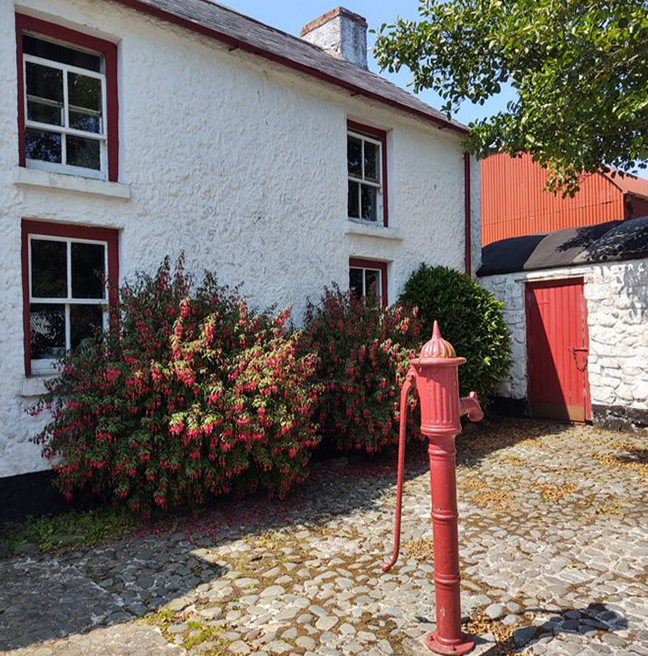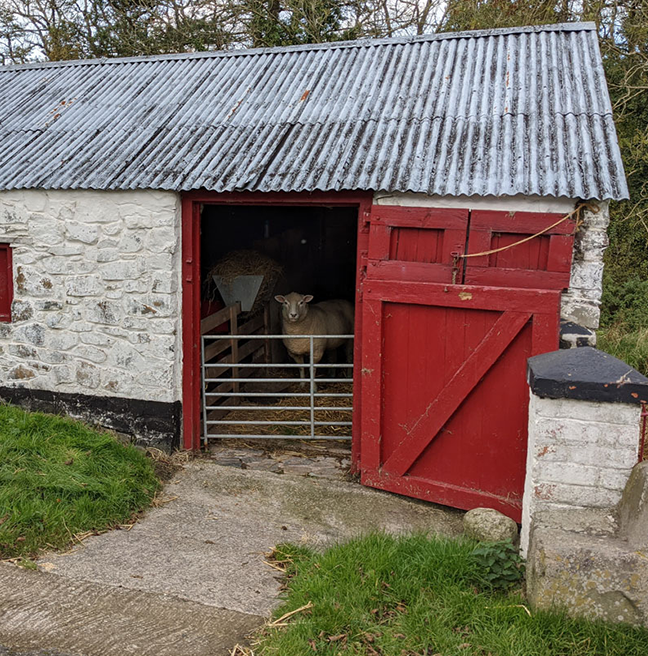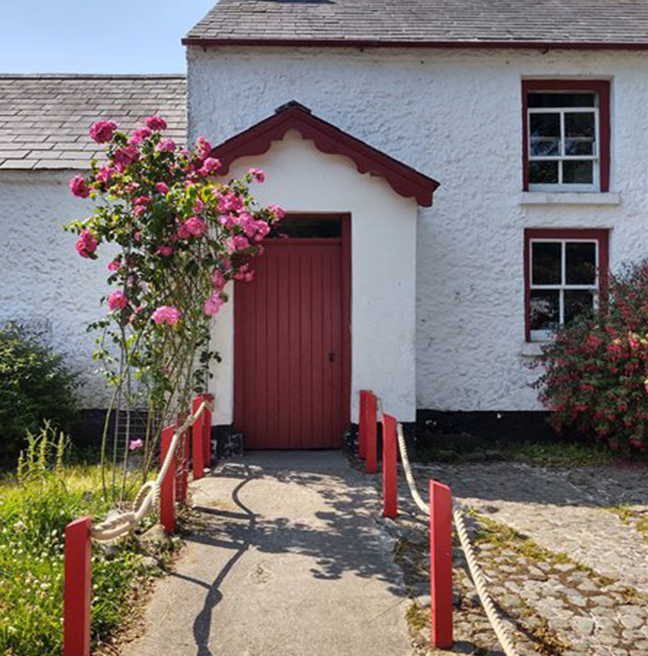Drumnahunshin Farm House
Map Location: Rural 'Field' Area, 51. PLEASE NOTE: This building is currently closed for conservation and repair work. As we're using traditional materials and skills to complete the work, it will be closed to visitors for a couple of months. We're sorry for any disappointment but hope you understand it's important to carefully conserve these buildings.
View MapThe farmhouse was built in the early 1800s and came from Drumnahunshin townland in County Armagh. It was dismantled and moved to the Folk Museum in the 1980s.
The farm was originally a 30 acre farm holding but by 1818 the land had been subdivided into a 10 acre farm. A small flax mill built on the land added to the farm’s modest prosperity. The farm’s range of outhouses included a cart house, a stable and cow byre, milk house and a fuel store.
The original farmhouse was a single storey, two roomed, thatched house with a central kitchen hearth and jamb wall. This internal partition wall helped to screen the kitchen fire from draughts.
In the early 1900s the farmhouse was extended and improved by being both ‘raised and slated’’. The farmhouse was a comfortable, two storied, slated house. It had extra bedrooms upstairs and a kitchen, parlour and dining room downstairs. The house is well furnished. On the ground floor it has decorative fire surrounds and attractive mahogany furniture. Upstairs the bedrooms are simply furnished.
The Patterson family lived in the Drumnahunshin farmhouse. In 1818, James Patterson held the farm tenancy from the Gosford estate. In the early 1900s, his grandson, John Patterson bought the farm under the Land Purchase Act.
The last person to live in the Drumnahunshin farm house was Miss Margaret (Maggie) Patterson, the daughter of John and Esther Patterson. Maggie was born in 1888. As electricity was never installed in the house Maggie relied on oil lamps to light her home. She died in the 1960s in a local nursing home.
In 1975, Maggie’s American niece, Mrs Esther G Komich of California donated the farmhouse to the museum.
Several features suggest a degree of affluence, the cast iron stove in the kitchen which replaced the original open hearth, the mock panelling in the parlour, the decorative fire surrounds and some fine furniture and china.





